Pentecost and Pacemakers
In May 2015, Cynthia Bourgeault shared a recent experience of a sudden health problem through the beautiful letter below. Thank you to Wisdom Way of Knowing (formerly Center for Spiritual Resources) for sharing the letter.
Pentecost 2015
Dear Wisdom Friends,
I guess you’re all wondering what happened to me last week.
The long and short of it is that on Saturday a week ago, while driving down from Maine to Massachusetts for our upcoming Ascensiontide Wisdom retreat at Glastonbury Abbey, I began to feel decidedly strange behind the wheel, needing to muster my entire concentration to keep from passing out. I spotted one of those blue hospital signs at a freeway exit and decided to follow it. A good intuition, it turns out! I was admitted with what’s known as acute third degree heartblock (which means that the heart’s electrical system is essentially in total meltdown), and emerged from the ordeal three days later with a new pacemaker happily ticking away in my chest.
It’s not exactly as if this came out of the blue. For a couple of years now I’d been complaining about difficulty with shortness of breath walking up hills, and I could tell inwardly that something was off. But my cardiologist had been focused on arterial issues rather than electrical ones, and the electrical system gave no outward signs of misbehaving. Just last January I’d been given a clean bill of heart health.
Glad I didn’t take his recommendation to begin a regular cardio fitness regime!
This has all turned out as well as possible. While a heartblock is definitely a serious condition (worst case scenario is progression to sudden cardiac arrest), it is also one of the most easily treatable. Thanks to the wonders of modern technology, I am literally bionically reborn! My new high-tech pacemaker is programmed to cue off my natural atrial electrical impulse (the “top half” of the heartbeat) and help the ventricular impulse (the “lower half,” which was getting blocked) to synchronize. The result is that I am simply, fully “me” again, back in the ballgame with the old familiar pizzazz, and my eyes still blinking in wonder.
There is so much to be grateful for. If you have to have a medical emergency, this is about as cushioned as it gets. I was under 24-hour cardiac surveillance at a fine hospital until the surgery could be arranged, with the emergency pacemaker (if it came to that) right in the room. My daughter Lucy lives nearby, and was there at my side throughout the whole adventure — and now, is providing a wonderful space for recuperation while my new device and I settle in together. Best of all, my brilliant senior wisdom students, spearheaded by Bill Redfield and Patricia Speak, rose to the occasion magnificently and jointly co-created a memorable Ascensiontide retreat.
And from around the world, your love and prayers poured in. I felt deeply “carried” by a higher hand.
Everything being equal, I will receive the “all clear” from my pacemaker surgeon tomorrow and make my way back to Maine over the following two days, slowly resuming my normal activity (on which there should be no limitations). Thank heavens it was already a “hermit time” in my schedule, deliberately left wide open for writing and family visits.
The spiritual implications will take a bit longer to sink in. But for the moment, this is what’s uppermost in my mind:
For many years now during my evening psalmody I’ve chanted the line from Psalm 139: “the number of my days was appointed before one of them came into being.” And I think it’s Ecclesiastes where one finds the line, “Lord, make me to know the number of my days.” I know I’ve sung it in the Brahms Requiem. In fact, just six years ago at my first husband Cal’s memorial service.
Well, for better or worse, I now know the number of my days: 68 years, 2 months, 3+ days. Without being overly alarmist, it’s pretty clear to all concerned that the situation I experienced this weekend was not going to self-correct. Without those equal infusions of grace and modern technology my life would even now be winding down, or wound down already. As it is, I apparently have a 10-15 year medical extension, easily renewable if the rest of the one horse shay holds up.
It’s not like I’m now living on borrowed time, for this second wind that’s been given to me is fully my own life in this skin and bones, on this precious planet, and I intend to make the most of it. But you could say, perhaps, that it’s borrowed time from the Imaginal realm, a bit more space to explore the crucial dimensions of being finite, of bringing this all to a conscious fulfillment. And as I gradually get back into the rushing river of my life, I will try not to let this precious realization slip away.
Boundless thanks to all! In both realms. May I use this extension consciously and gratefully.
~ Cynthia
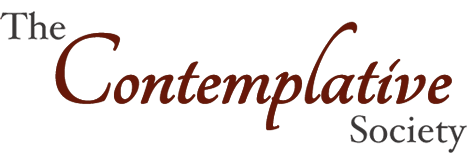
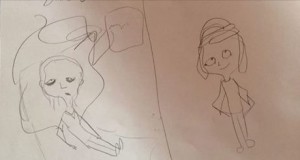


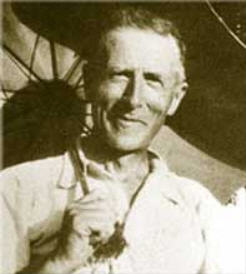
 ritual Masters series, Orbis Books, 1999). King’s well-chosen selections and helpful introductory commentary will help get you up to speed as painlessly as possible. From there, go to The Heart of Matter, Teilhard’s magnificent spiritual autobiography, written near the end of his life, which offers a moving recapitulation of his lifelong themes as well as a reflection on his earlier work.
ritual Masters series, Orbis Books, 1999). King’s well-chosen selections and helpful introductory commentary will help get you up to speed as painlessly as possible. From there, go to The Heart of Matter, Teilhard’s magnificent spiritual autobiography, written near the end of his life, which offers a moving recapitulation of his lifelong themes as well as a reflection on his earlier work. Beatrice Bruteau—scholar, teacher, interspiritual pioneer, and intrepid explorer of the evolutionary edge of consciousness—quietly departed this earth plane on November 16, 2014, at the age of 84. Her passing exemplified her signature brand of clarity, freedom, and intentionality: traits which for more than five decades have been the hallmarks of her teaching presence among us and which she now bequeaths to us as both a legacy and a continuing invitation.
Beatrice Bruteau—scholar, teacher, interspiritual pioneer, and intrepid explorer of the evolutionary edge of consciousness—quietly departed this earth plane on November 16, 2014, at the age of 84. Her passing exemplified her signature brand of clarity, freedom, and intentionality: traits which for more than five decades have been the hallmarks of her teaching presence among us and which she now bequeaths to us as both a legacy and a continuing invitation. Despite these stellar academic credentials, Beatrice chose to “think globally, act locally.” For most of her long career she lived in and around Winston Salem, North Carolina, where she and her husband, Fordham professor James Somerville, founded the Schola Contemplationis, a center for the study and practice of the contemplative lifestyle according to the classical traditions of both East and West. For more than thirty years, their “mind-bending” monthly newsletter, The Roll, was painstakingly composed in their home office, run off on an old mimeograph machine, and hand-mailed to their small but devoted mailing list. A Southern lady “to the nines,” she dressed impeccably for every occasion, refused to travel by air, and insisted that coffee and tea be served in proper china cups—not, heaven forbid, mugs!
Despite these stellar academic credentials, Beatrice chose to “think globally, act locally.” For most of her long career she lived in and around Winston Salem, North Carolina, where she and her husband, Fordham professor James Somerville, founded the Schola Contemplationis, a center for the study and practice of the contemplative lifestyle according to the classical traditions of both East and West. For more than thirty years, their “mind-bending” monthly newsletter, The Roll, was painstakingly composed in their home office, run off on an old mimeograph machine, and hand-mailed to their small but devoted mailing list. A Southern lady “to the nines,” she dressed impeccably for every occasion, refused to travel by air, and insisted that coffee and tea be served in proper china cups—not, heaven forbid, mugs!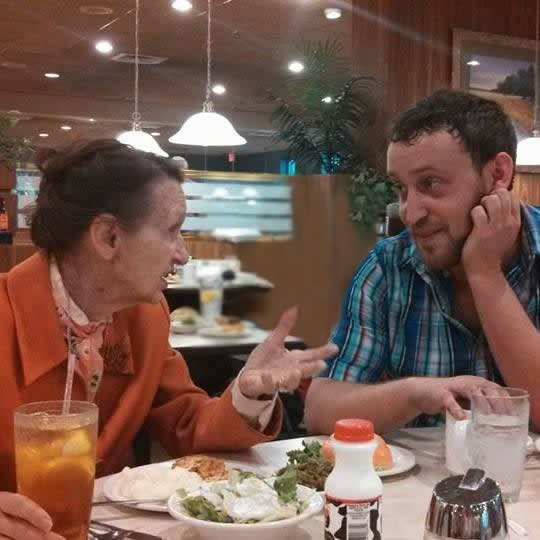 Little did any of us at the time—maybe even Beatrice—suspect the final surprising denouement with which she would make her exit from this life. As it so happened, one of my younger students, Joshua Tysinger, had begun his seminary studies at Wake Forest, right there in Winston Salem, just about the time that Beatrice’s life was rounding toward its end. I suggested—and Josh was alert enough to follow up on the suggestion—that having a world class spiritual master right in town was an opportunity not to be missed. He began to pay her regular visits, and it soon became clear that a lineage transmission was in process. As Josh willingly and sensitively helped Beatrice and Jim navigate the horizontal axis, her brilliant final imparting of a lifetime of spiritual wisdom and spiritual fire (mostly over lunch at the A & W cafeteria, with, yes, proper coffee cups!) is an exchange that I suspect will not leave the planet unchanged.
Little did any of us at the time—maybe even Beatrice—suspect the final surprising denouement with which she would make her exit from this life. As it so happened, one of my younger students, Joshua Tysinger, had begun his seminary studies at Wake Forest, right there in Winston Salem, just about the time that Beatrice’s life was rounding toward its end. I suggested—and Josh was alert enough to follow up on the suggestion—that having a world class spiritual master right in town was an opportunity not to be missed. He began to pay her regular visits, and it soon became clear that a lineage transmission was in process. As Josh willingly and sensitively helped Beatrice and Jim navigate the horizontal axis, her brilliant final imparting of a lifetime of spiritual wisdom and spiritual fire (mostly over lunch at the A & W cafeteria, with, yes, proper coffee cups!) is an exchange that I suspect will not leave the planet unchanged.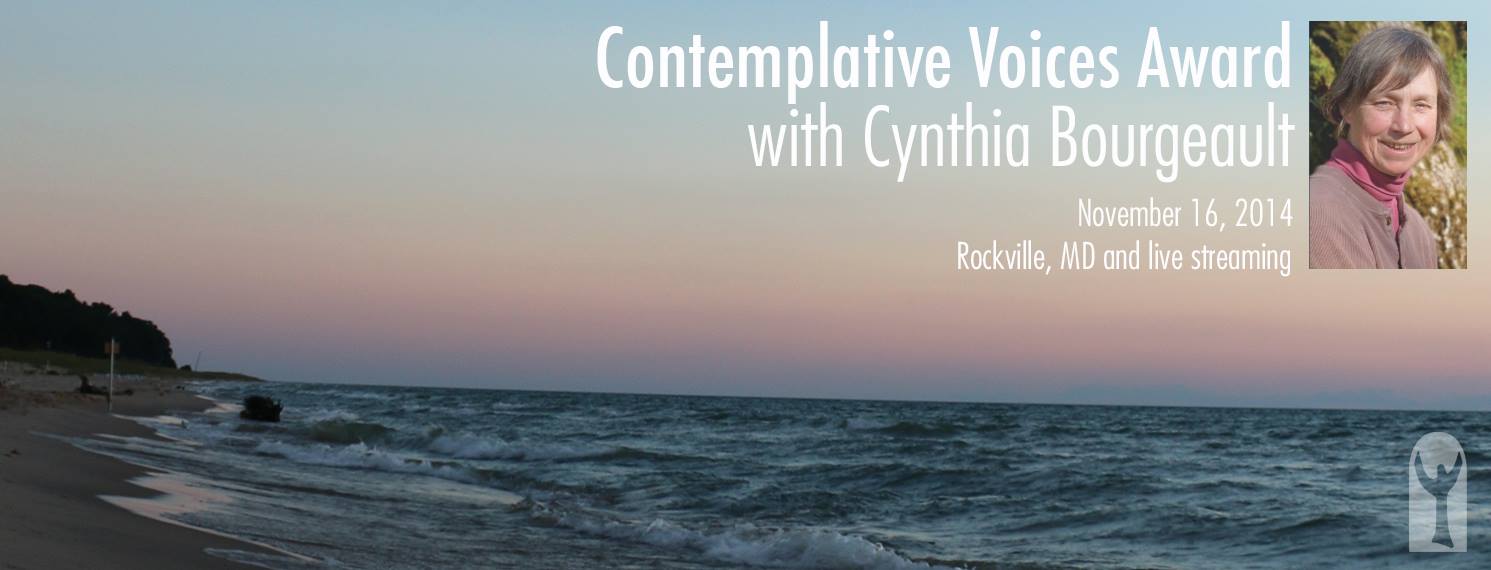 On November 16 The Shalem Institute for Spiritual Formation presented its 2014 Contemplative Voices Award to the Rev. Dr. Cynthia Bourgeault. The Shalem Contemplative Voices Award was created to honor those individuals who have made significant contributions to contemplative understanding, living and leadership and whose witness helps others live from the divine wellspring of compassion, strength, and authentic vision. Past honorees have been Father Richard Rohr, OFM, the Rev. Margaret Guenther and Rev. John Philip Newell. The evening included a web-streamed (video-taped) recording of Cynthia’s presentation. Cynthia Bourgeault, a modern-day mystic, writer and internationally known retreat leader was honored by Shalem with a special benefit evening on November 16, 2014 at the Unitarian Universalist Congregation in Rockville, MD. Cynthia is an Episcopal priest and a founding director of both The Contemplative Society and the Aspen Wisdom School. She continues to contribute to The Contemplative Society in her role as principal teacher and advisor and is dedicated to promoting the practice of Centering Prayer. She is a past Fellow of the Institute for Ecumenical and Cultural Research at St. John’s Abbey in Collegeville, MN, and an oblate of New Camaldoli Monastery in Big Sur, CA. Cynthia is also the author of eight books including: The Holy Trinity and the Law of Three; The Meaning of Mary Magdalene; The Wisdom Jesus; Centering Prayer and Inner Awakening; Mystical Hope; and The Wisdom Way of Knowing. In addition, she has authored or contributed to numerous articles and courses on the Christian spiritual life. “Cynthia is passionate about recovering the Christian contemplative and Wisdom path and is one of the clearest contemplative voices today,” says Leah Rampy, Shalem’s executive director. “By her life as a hermit and teacher, she witnesses daily to the value of the contemplative path, and we are honored to acknowledge her in this way.” From Cynthia’s presentation:
On November 16 The Shalem Institute for Spiritual Formation presented its 2014 Contemplative Voices Award to the Rev. Dr. Cynthia Bourgeault. The Shalem Contemplative Voices Award was created to honor those individuals who have made significant contributions to contemplative understanding, living and leadership and whose witness helps others live from the divine wellspring of compassion, strength, and authentic vision. Past honorees have been Father Richard Rohr, OFM, the Rev. Margaret Guenther and Rev. John Philip Newell. The evening included a web-streamed (video-taped) recording of Cynthia’s presentation. Cynthia Bourgeault, a modern-day mystic, writer and internationally known retreat leader was honored by Shalem with a special benefit evening on November 16, 2014 at the Unitarian Universalist Congregation in Rockville, MD. Cynthia is an Episcopal priest and a founding director of both The Contemplative Society and the Aspen Wisdom School. She continues to contribute to The Contemplative Society in her role as principal teacher and advisor and is dedicated to promoting the practice of Centering Prayer. She is a past Fellow of the Institute for Ecumenical and Cultural Research at St. John’s Abbey in Collegeville, MN, and an oblate of New Camaldoli Monastery in Big Sur, CA. Cynthia is also the author of eight books including: The Holy Trinity and the Law of Three; The Meaning of Mary Magdalene; The Wisdom Jesus; Centering Prayer and Inner Awakening; Mystical Hope; and The Wisdom Way of Knowing. In addition, she has authored or contributed to numerous articles and courses on the Christian spiritual life. “Cynthia is passionate about recovering the Christian contemplative and Wisdom path and is one of the clearest contemplative voices today,” says Leah Rampy, Shalem’s executive director. “By her life as a hermit and teacher, she witnesses daily to the value of the contemplative path, and we are honored to acknowledge her in this way.” From Cynthia’s presentation: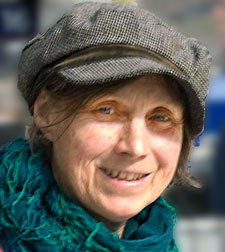
 Sharing the legacy of
Sharing the legacy of 